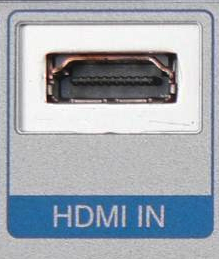HDMI (High Definition Multimedia Interface)

High Definition Multimedia Interface (HDMI) is a digital interface for transmitting video and audio, capable of transmitting uncompressed audio and video signals. HDMI can be used in set-top boxes, DVD players, personal computers, game consoles, AV receivers, digital sound systems, and televisions. HDMI can transmit both audio and video signals simultaneously, simplifying system installation by using a single cable for both signals.
HDMI is designed to replace older analog audio/video interfaces such as SCART or RCA. It supports various video formats for TVs and computers, including SDTV and HDTV, as well as multi-channel digital audio. During transmission, various video data is encoded into data packets by HDMI transceiver chips using Transition Minimized Differential Signaling (TMDS) technology. At its initial specification, the maximum pixel transmission rate was 165Mpx/sec, sufficient to support 1080p quality at 60 frames per second or UXGA resolution (1600x1200); later, the HDMI 1.3 specification increased this to 340Mpx/sec to accommodate future needs.
HDMI also supports uncompressed 8-channel digital audio transmission (sampling frequency 192kHz, data length 24 bits/sample), as well as any compressed audio streams such as Dolby Digital or DTS, and supports the 1-bit DSD signal used in SACD for 8 channels. In HDMI 1.3, support for high-bandwidth uncompressed audio streams such as Dolby TrueHD and DTS-HD was also added.
The standard Type A HDMI connector has 19 pins, and a Type B connector that supports higher resolutions has been defined, but no manufacturers currently use the Type B connector. The Type B connector has 29 pins and allows for the transmission of expanded video channels to meet future high-definition demands, such as WQSXGA (3200x2048).
Type A HDMI is backward compatible with the Single-link DVI-D or DVI-I interfaces used by most displays and graphics cards today (but not DVI-A). This means that a signal source using a DVI-D interface can drive an HDMI monitor through a conversion cable, but this conversion scheme does not support audio transmission and remote control functions. Furthermore, non-HDCP certified DVI displays will not be able to view HDCP-protected video data output from HDMI. (All HDMI displays support HDCP, but most DVI displays do not support HDCP.) The Type B HDMI connector will also be backward compatible with Dual-link DVI interfaces.
The HDMI organization was initiated by major consumer electronics manufacturers such as Hitachi, Panasonic, Quasar, Philips, Sony, Thomson RCA, Toshiba, and Silicon Image. Digital Content Protection, LLC provides copy protection technology related to the HDMI interface. Additionally, HDMI is supported by major film studios such as 20th Century Fox, Warner Brothers, Disney, as well as major consumer electronics manufacturers including Samsung Electronics and several cable system operators.
One of the main issues with HDMI is its cable length limit. Some consumer tests report that standard 28 AWG (American Wire Gauge) HDMI copper cables begin to experience signal degradation after exceeding 5 meters. This length is typically insufficient for connecting projectors and computers.
However, the HDMI organization does not recognize this limitation; its FAQ page states, "We have seen cables pass compliance testing without adapters through standard HDMI cables not shorter than 10 meters."
Currently, HDMI-certified 10M cables (without HDMI equalizer IC) are mostly made using 24 AWG wire.
Some reports indicate that increasing the diameter of the copper wire in the cable to reduce impedance is one effective method to extend cable length, and other reports suggest that 24 AWG cables perform better than 28 AWG cables. Additionally, some users have replaced standard HDMI copper cables with fiber optics or two CAT-5 network cables. Some manufacturers also produce HDMI signal enhancers to meet user needs.
Currently, a single HDMI equalizer IC can extend the maximum length of a 24 AWG HDMI cable to 50 meters. If sufficient and clean power is provided, it can be cascaded further.


- Content sourced from Wikipedia
Wi-Fi Network Planning Advice
15 Tips for Hard Drive Longevity
10 Things About Image Analysis
知識學院
蘊藏許多助人的知識與智慧。